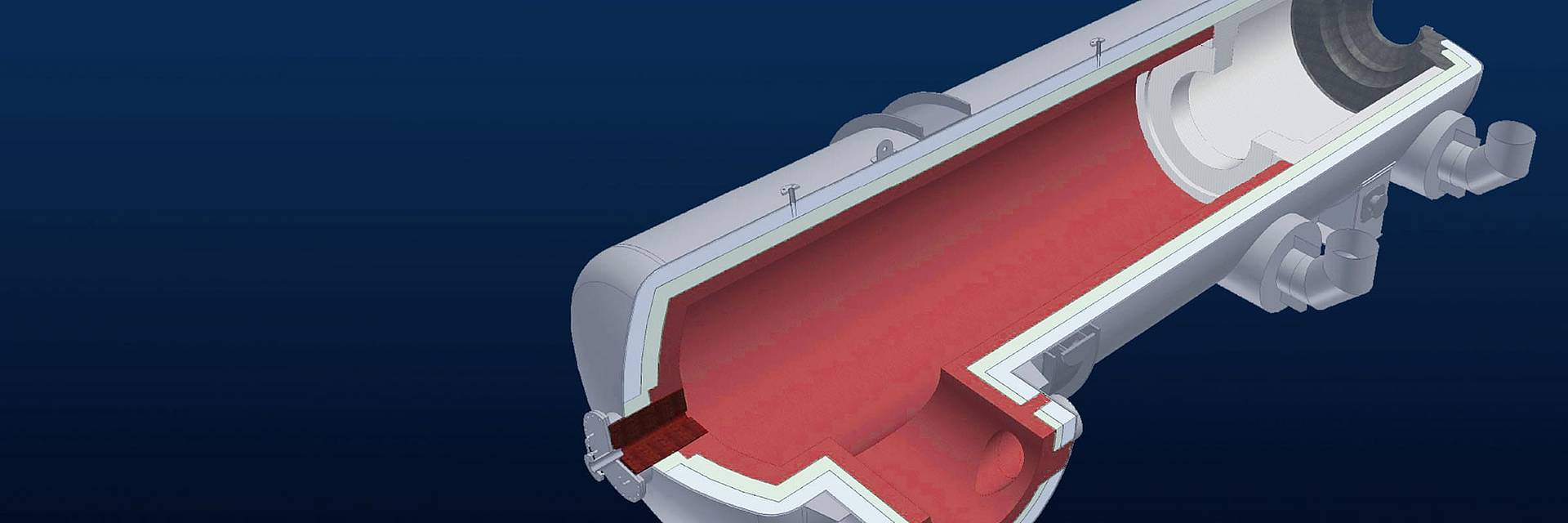Sulfuric acid (H2SO4) is one of the most important industrially produced chemicals and is used for countless organic syntheses as a reactant, catalyst and reaction aid.
The contact process commonly used today for sulfuric acid production (single or double catalysis) primarily requires sulfur dioxide (SO2).
It can be obtained by three different processes: By burning sulfur in a sulfur combustion furnace, by oxidative combustion of sulfidic ores in a roasting plant in the fluidized bed furnace, or by burning waste sulfuric acid.
The sulfur required for the sulfur combustion process is smelted in sulfur pits. Sulfur pits are usually made of concrete and applied with a layer of foam glass and an additional ceramic lining and jointed with potassium silicate or furan resin mortar. As an alternative to foam glass, other insulating materials such as vermiculite are also used. The ceiling of the sulphur pit is made of clamp bricks.
Steuler linings certainly meet the requirements in all details.
Fluidized bed roasting furnaces / sulfur combustion furnaces
Due to the high temperatures of approx. 1,000 - 1,600 °C, the fluidized bed furnaces and sulfur combustion furnaces required for the respective process must be protected with a multi-layer refractory lining. The critical operating parameters can be seen in the highly corrosive atmosphere (SO2), temperatures below the dew point, a temperature load change due to a continuous / discontinuous operating mode and critical flow conditions due to impact walls or other installations.
As a complete supplier with experience and know-how, Steuler supplies all the materials required, including the anchoring systems for the refractory lining.
Waste sulfuric acid incineration
Due to the enormous quantities of waste sulfuric acid from various industrial production processes, a secondary process or recycling process is increasingly being used. In this process, the waste acid is thermally split into sulfur dioxide and water in a sulfuric acid combustion plant.
The process temperature required for this is up to 1,600 °C. The critical boundary conditions here also result from the highly corrosive atmosphere (SO2), possible temperatures below the dew point and continuous / discontinuous operation as well as temperature cycling. Furthermore, increased slag formation is to be expected due to impurities in the waste acid (metal salts). The selection of suitable refractory materials with low open porosity, alkali-resistant raw materials and the use of chemical bonding components are essential here.
Full service also in refractory construction
Based on the respective process conditions, we develop detailed refractory designs and lining concepts. Based on the steel construction drawings and process data provided, we develop the specific refractory design for the respective aggregate. The scope of services naturally also includes wall construction concepts and assembly drawings as well as heat transfer calculations and heating recommendations for subsequent commissioning.



![[EN] [EN]](/fileadmin/steuler-linings/images/Services/services-verteiler-teaser.jpg)